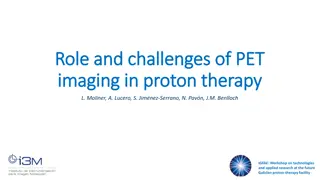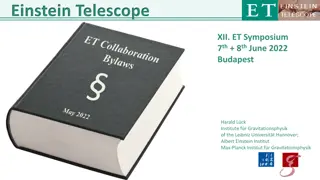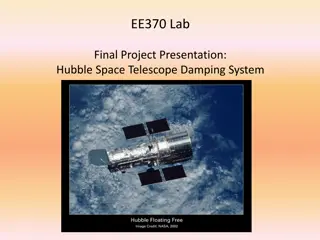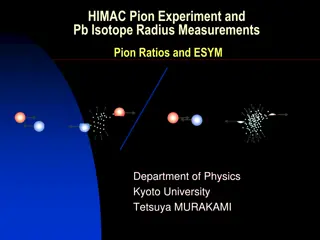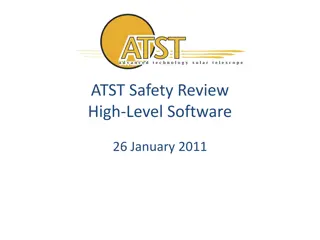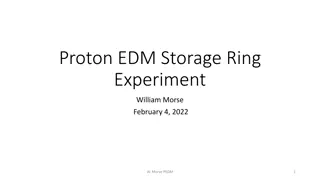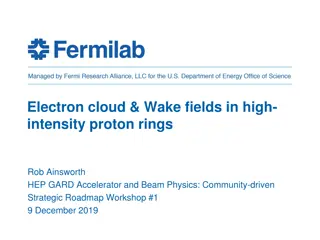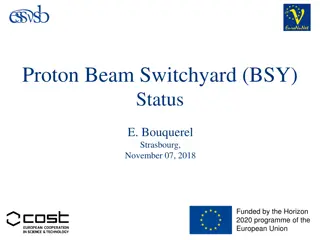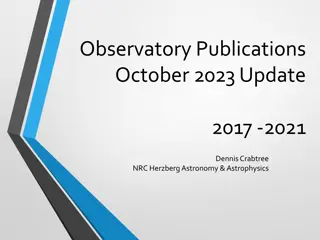Compact Relativistic Electron Proton Telescope Development
Overview of the CREPT project focusing on building a detector to study microbursts in the Van Allen Radiation Belts and understand particle motion within Earth's magnetic field. The project involves simulations, calibrations, and instrument building to investigate sudden flux changes and loss mechanisms for electrons.
Download Presentation

Please find below an Image/Link to download the presentation.
The content on the website is provided AS IS for your information and personal use only. It may not be sold, licensed, or shared on other websites without obtaining consent from the author.If you encounter any issues during the download, it is possible that the publisher has removed the file from their server.
You are allowed to download the files provided on this website for personal or commercial use, subject to the condition that they are used lawfully. All files are the property of their respective owners.
The content on the website is provided AS IS for your information and personal use only. It may not be sold, licensed, or shared on other websites without obtaining consent from the author.
E N D
Presentation Transcript
CREPT Compact Relativistic Electron Proton Telescope Ashley Jones 1 August 2012
Introduction Background information Van Allen Radiation Belts Particle motion Microbursts What I am working on Instrument building Simulations Calibrations Summary
Van Allen Radiation Belts The belts consist of ~1-10 MeV electrons and protons trapped in Earth s magnetic field Earliest models strictly showed an inner and outer zone, but by 1990, scientists detected injection of outer belt electrons and solar energetic protons to a slot region between the belts These trapped regions can last for years The outer zone is dynamic and electron lifetimes range from minutes to years The inner zone is more stable, lifetimes lasting > 100 days
Particle motion In the Earth s trapped field, there are three degrees of motions Latitudinal motion happens on the scale of seconds Gyroscopic motion is on the scale of milliseconds Longitudinal motion occurs on the scale of minutes Pitch angle: angle between the direction of the magnetic field and spiral trajectory Trapped particles bounce back and forth near the poles, but if the pitch angle is small enough, the particle interacts with the atmosphere. This is called precipitation.
Microbursts Short, intense bursts of precipitation (tens of msec) Significant loss mechanism for electrons on the outer zone Loss time scale ~1 day Observed on dayside
SAMPEX electrons: 2.0 - 6.0 MeV 7 6 5 105 L Value 104 4 103 -1] 3 -1sec -2sr 102 e [cm 2 POLAR electrons: > 2.0 MeV 101 7 100 6 10-1 5 L Value 4 3 2 1992 1993 1994 1995 1996 1997 1998 1999 2000 2001 2002 2003 Studying microbursts in more detail can tell us what causes these sudden flux changes I have been helping to build a detector to detect these microbursts using a stack of solid state detectors used as a particle telescope
Solid-State Detector Incoming particle creates electron-hole pairs Applied electric field sweeps charge, inducing a current Signal charge is proportional to energy lost
Detector overview Sensor energy to signal Preamplifier amplifies the signal so it is measurable Pulse shaper improve signal to noise ratio ADC converts smooth pulse amplitude to discrete steps for energy output
Geant simulations When a particle travels through a stack of detectors, it deposits some amount of energy in each detector (the amount is dependent on the total energy of the particle) My mentor created simulations of 100000 particles going through the telescope Using these simulations, I could see how much energy was deposited in each detector as well as the total energy of the particle
I created equations that would allow us to label an incoming particle as being within a certain range of energy based on how much energy was deposited in each detector Eg, if a particle deposits greater than .5 MeV in detector 1 and less than .3 MeV in detector 2, it likely has total energy 1-1.3 MeV Efficiency Charti
Detector Calibration IV curves Varying voltages were applied to the detector. A resistor of known resistance was attached to the detector output, and the current was measured across the resistor. Thus the internal detector resistance could be calculated (V=IR). IV Curve - Detector C 0 -500 -400 -300 -200 -100 0 -0.05 -0.1 -0.15 Current ( A) -0.2 -0.25 -0.3 -0.35 -0.4 -0.45 -0.5 Voltage (V)
RC time constant The time taken to discharge a capacitor to e-1 of its initial voltage = RC. The decay time was found using a pulse generator and physically measuring the decay on an oscilloscope. Using R found from the IV curve test, the capacitance of the detector can also be calculated. RC Time Constant: Detector B 365 345 325 Time ( s) 305 285 265 245 0 50 100 150 200 250 300 350 400 Voltage (-V)
Source calibration Americium 241 was placed directly on each detector at various points to make sure the energy deposited did not change with location and to see if the energy increased with increased voltage through the detector. Average Energy Channel for AM241 Source: Detector A 4000 3500 3000 2500 Channel 2000 1500 1000 500 0 0 100 200 300 400 Voltage (V)
Noise measurement A pulse of known voltage was sent through the detector setup to calibrate output ADC channels with actual energy levels and to noise levels. FWHM from Pulse Curve 160 140 120 100 FWHM Detector A 80 Detector B 60 Detector C 40 20 0 0 100 200 300 400 Voltage (V)
Instrument build I ve also been helping put together the test instrument Important because not everything works like it should Some screw holes didn t line up, the silicon detectors didn t fit in their tubing, etc We re still perfecting the plans Worked in a clean room to fit everything together Put together the amplifier and preamplifier, which came semi assembled from the manufacturer Hopefully testing will start in a few weeks
Summary I have worked on many parts of the CREPT experiment, learning the science, working on the computer, and working on the physical detector. Calibrations are finished, but simulations and build are still in progress. CREPT hopes to be up and working within the year. Thanks to my mentor Shrikanth Kanekal and lab engineer Mark Shappirio for their guidance and patience this summer.
Outer Zone L 3 and dynamic Electron lifetimes range from minutes to days to years Inner Zone L<2 and stable Proton lifetimes often > 100 days Largely cosmic ray albedo neutron decay and solar energetic protons
Changes in electron flux Flux decreases can be attributed to adiabatic effects or real losses (precipitation or magnetopause shadowing) Largest fluxes during declining phase from solar maximum Dst effect: adiabatic decrease where ring current builds up, decreasing magnetic field strength. This leads to outward radial motion of electron drift paths. Pitch angle scattering (precipitation) Plasmaspheric hiss (explains formation of slot region) Chorus Electromagnetic ion cyclotron waves (near dusk) Magnetopause losses cause flux dropouts during the main phase of a storm Adapted from R. M. Thorne GRL 2010
Microbursts Observing microburst precipitation gives evidence for pitch-angle scattering by chorus Same local time distribution as chorus Duration of bursts of precipitation about the same of chorus risers Accounts for significant losses during main phase of a storm
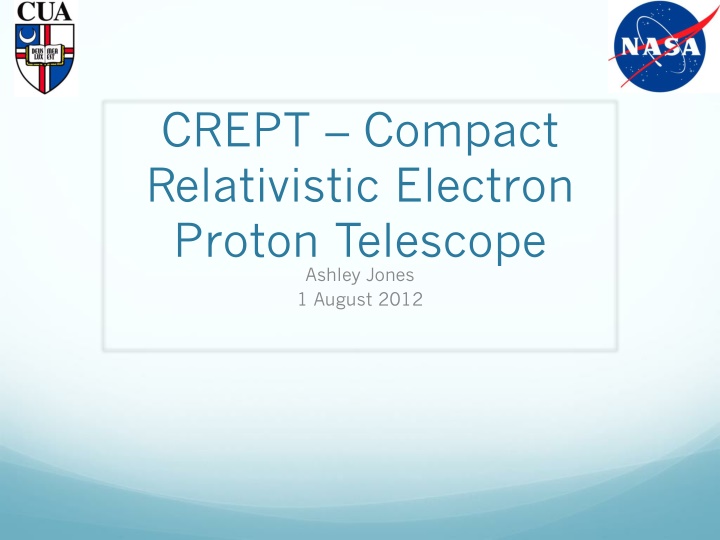

![get⚡[PDF]❤ The Hubble Space Telescope: From Concept to Success (Springer Praxis](/thumb/21514/get-pdf-the-hubble-space-telescope-from-concept-to-success-springer-praxis.jpg)
